There is a glacier melting in the mountains of Italy. It goes without saying that there is a team of researchers busy trying to keep track of this unfortunate event. This is a historic event as it has revealed something unbelievable hidden in the ice. Something hidden for what must have been at least a century! When it was time to take a close look at it, they found a shocking secret that dates back to the First World War… What other secrets are we going to uncover in this part of the globe with the looming threat of global warming? The answer to this question has instilled both fear and excitement in people in the area and beyond.

Frozen In The Past The Melting Of This Alpine Glacier Revealed An Old Military Barracks
The Great War Sent Europe Into Disarray
Often known as the Great War, Europe had been in total disarray during the conflict in question. This region of the Italian Alps served as one of the most brutal sights of battle back then. The problem is that there are no plaques or museums to mark the exact locations of the battles. In the past, the only things that you would find there were snow and ice. The glaciers dominated the landscape in this corner of the world.

The Great War Sent Europe Into Disarray
There Is An Icy Plateau Above Europe
What exactly unfolded on the icy plateau above the European continent? No one expected to discover a relic from that dark period in time. Climate change has truly brought about a plethora of changes over the years. It includes the melting of the ice atop Mount Scorluzzo, which has revealed the unbelievable.

There Is An Icy Plateau Above Europe
For The First Time In A Century
In 2017, a team of researchers walked into the cave. For generations, this place had been sealed by ice and snow. This was when they discovered something that gave us amazing insight into the people who fought in the White War. At long last, the world could finally hear the stories of these brave men.

For The First Time In A Century
On The Border Of Two Nations
You are going to find Mount Scorluzzo near the border of Italy and Switzerland. It stands at over 10,000 feet above sea level and overlooks among the highest paved roads in the Alpine region. This is not as hard to climb as the other peaks there. In fact, it has been conquered by mountaineers time and again.

On The Border Of Two Nations
It Is Not Just Climbers Either
Climbers are not the only ones to have ascended the snow-capped mountain in the past. Prior to the Great War, there used to be an important border known as the Stelvio Pass. It runs through the Alps about a thousand feet below the apex of Mount Scorluzzo. The Kingdom of Italy had been on the east, while the other side marked the western border of the Austro-Hungarian Empire.
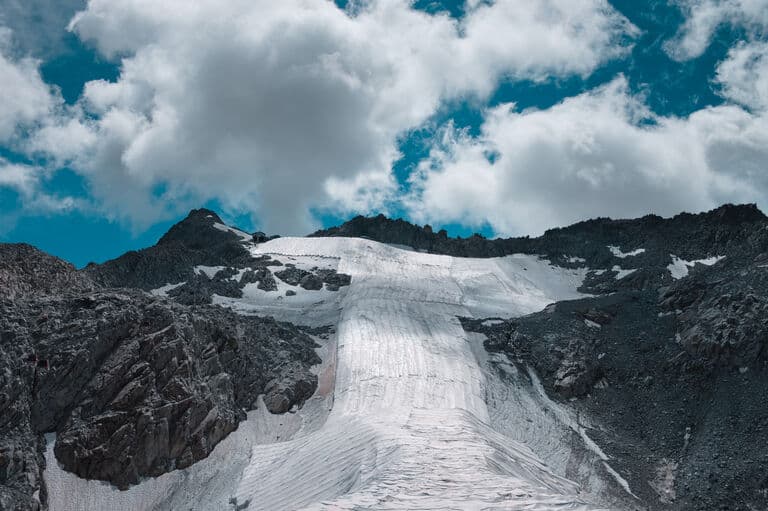
It Is Not Just Climbers Either
Thanks To The Treaty Of Vienna
In 1866, both sides signed the Treaty of Vienna and enjoyed relative peace for quite some time. As a matter of fact, they had even been allies during the outbreak of hostilities in July 1914. As the complex conflict spread across the region, however, old tensions between the two started to surface once more.

Thanks To The Treaty Of Vienna
After The Treaty Of London
In 1915, Italy broke free from the Triple Alliance that it formed with Germany and Austro-Hungary by signing the Treaty of London. This meant that the two entities bordered by the Stelvio Pass were at war with each other. Mount Scorluzzo, which separated them, had a lot of advantages in the conflict.

After The Treaty Of London
The Conflict Made Its Way Up There
It had not been a surprise when the conflict reached the Alps. For more than four hundred miles across the summits, soldiers from both sides battled it out in what has since become called the White War. This went on for three years. The soldiers squared off in one of the most unfriendly terrains on the planet.
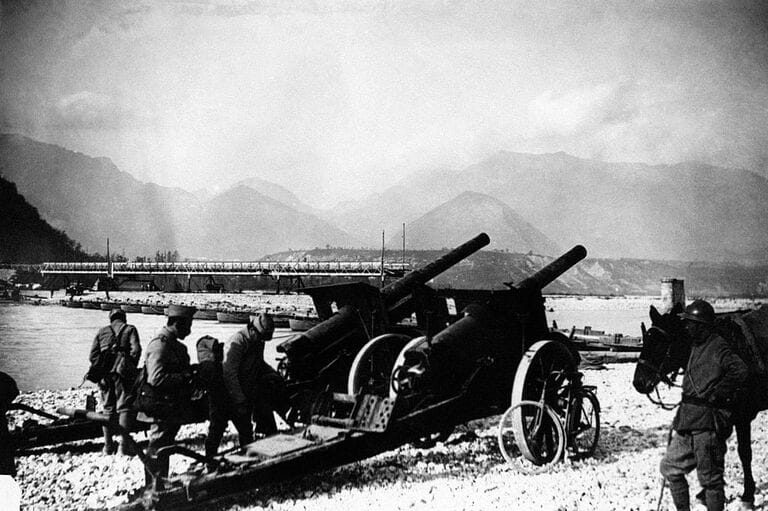
The Conflict Made Its Way Up There
It Used To Be An Alpine Paradise
There was a time when Mount Scorluzzo served as an Alpine paradise, but it was turned into a violent battlefield during the conflict. Instead of mountaineers conquering the slopes, there were young green soldiers forced to climb the snowy peaks with heavy equipment on their backs. This was not at all easy.
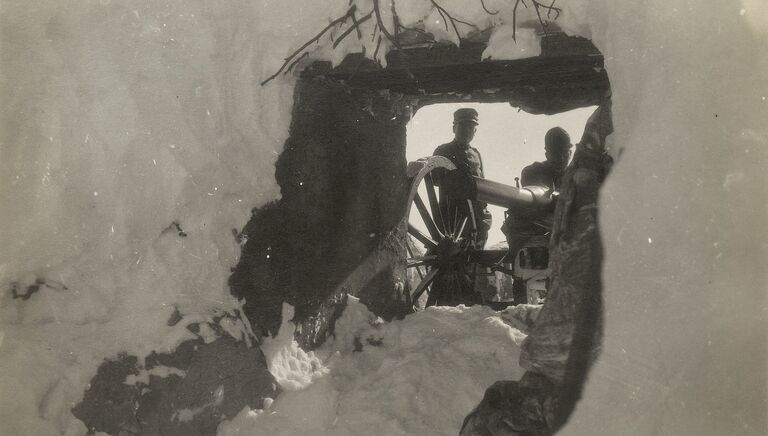
It Used To Be An Alpine Paradise
The Environment Was Very Hostile
“Soldiers had to fight against the extreme environment, fight against the snow or the avalanches, but also fight against the enemy,” explained Stefano Morosini when the Stelvio National Park historian talked to CNN just this May. There were times when the temperature went down to below -40° Fahrenheit. On top of that, blizzards raged across the terrain as the men struggled to make it to the top.

The Environment Was Very Hostile
Not Easy To Send Things Up There
The governments found it hard to send food and resources to all the soldiers on the front lines. The men were freezing and starving, but they had to fight in the name of survival. On top of that, experts are of the belief that the environment up there killed more servicemen than any other battle in the war.

Not Easy To Send Things Up There
Nothing As Arduous As This
In 1917, in a newspaper called New York World, writer E. Alexander Powell talked about how hard it was for the soldiers who participated in the White War. “On no front, not on the sun-scorched plains of Mesopotamia, nor in the frozen Mazurian marshes, nor in the blood-soaked mud of Flanders, does the fighting man lead so arduous an existence as up here on the roof of the world,” he said.

Nothing As Arduous As This
It Was Finally Coming To An End
In November 1918, the Italians launched an attack on the Tonale Pass forty miles away from Mount Scorluzzo. It was a success. The troops won over Austro-Hungary, and then the Allied nations in other parts of the world followed suit. Within two weeks, the First World War had finally come to a close.

It Was Finally Coming To An End
Time To Descend The Mountain
This meant that the remaining soldiers could finally descend Mount Scorluzzo and say goodbye to that brutal battlefield. They did not tidy up before this either. Instead, they abandoned a lot of relics on the peaks of the Alps. Mind you, a lot of those mementoes claimed the lives of hundreds of people.
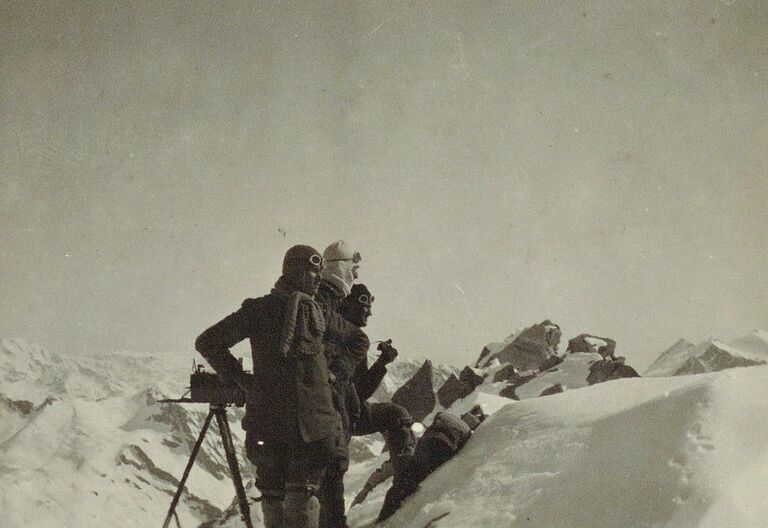
Time To Descend The Mountain
It Has Not Been Turned Into A Monument
In plenty of places, sights that have served as battlefields have been converted into monuments and even museums. However, things are different for the Italian Alps. You will not find a tourist destination there. The objects on Mount Scorluzzo stayed in the same place for a very long time until recently.

It Has Not Been Turned Into A Monument
Climate Change Has Arrived Here
Things are rapidly changing due to climate change. It has caused the glaciers to melt and reveal the truth about the White War a hundred years later. In 2018, they found the remains of a soldier on the Presena glacier close to Mount Scorluzzo. They were able to find documents with the remains, so they traced the relatives of the Italian man and gave him a proper burial. It took some time, but he got a proper sendoff.

Climate Change Has Arrived Here
What They Found Up There
Did they find anything comparable to that on the peak of Mount Scorluzzo? Researchers have always known that there was at least one Austro-Hungarian group posted there at the height of the White War. Their efforts to excavate the site had been unsuccessful due to the wall of ice that used to be there.

What They Found Up There
The Glacier Has Melted A Lot
With the world warming up, the glacier atop Mount Scorluzzo has melted further than it previously had. In 2017, the ice retreated to the point that it allowed access to a cave entrance. Officials at the White War Museum in Italy sent a team of experts to check out what was hiding inside.
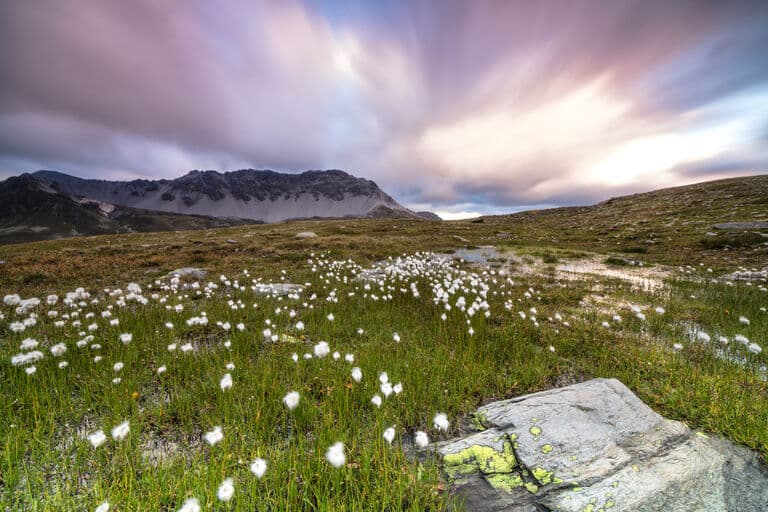
The Glacier Has Melted A Lot
When The Ice Gave Way
The ice revealed the unbelievable. They found a military barracks that used to house a crew of Austro-Hungarian soldiers. It looks like they just locked up the structure and walked out of it when the conflict finally ended. In fact, most of the contents remained intact. This has allowed the experts a glimpse at what it had been like in the mountains during the First World War.

When The Ice Gave Way
It Felt Like A Time Capsule
“The barracks is a time capsule of the White War that helps us to understand the extreme, starving conditions that the soldiers experienced,” Morosini shared with the Guardian in May 2021. He added, “The knowledge we’re able to gather today from the relics is a positive consequence of the negative fact of climate change.”

It Felt Like A Time Capsule
They Retrieved A Ton Of Artifacts
By April 2021, the experts had managed to retrieve about 300 artifacts from this historic location. They found postcards, clothes, letters, and other personal items that must have belonged to the soldiers. There were also coins, newspapers, and lanterns in there. However, it was also clear to the researchers that it was a struggle to live in the barracks during the conflict.

They Retrieved A Ton Of Artifacts
It Was Not A Comfortable Place
From the look of things, the soldiers had to sleep on beds made of straw and ate tinned food. It did not take much time for the rations to run low. This meant that had to look for other food sources. That explains the hollow animal bones that the team found, which suggests that they even ate the marrow.

It Was Not A Comfortable Place
Time Stopped In This Cave
The White War Museum echoed the comments made by Morsini. The statement said, “The findings in the cave on Mount Scorluzzo give us, after over a hundred years, a slice of life at over 3,000 meters above sea level, where time stopped on November 3, 1918, when the last Austrian soldier closed the door and rushed downhill.”

Time Stopped In This Cave
An Open Air Museum Of Sorts
According to Morsini, the barracks now functions as a “sort of open air museum.” However, there is an impressive collection that is starting to form as they bring the artifacts down from the Alps in the name of preservation. There are even plans to display them at the First World War museum in Bormio 2022.

An Open Air Museum Of Sorts
Not The Only Amazing Find
However, this is only one of the amazing discoveries they have made in the mountains in the region. In fact, the Italian Alps have been giving up secrets since the ‘90s. From the Dolomites to Lombardy, the melting glaciers have been revealing more and more amazing relics from a long time ago.

Not The Only Amazing Find
Daily Life In This Part Of The World
A couple of the artifacts show us what daily life had been like in the mountains. There are weapons, sledges, and diaries in the loot. However, there were also things that were more gruesome in nature. For one thing, a man hiking the Adamello region found the body of a soldier draped in the Italian flag in the summer of 2020.
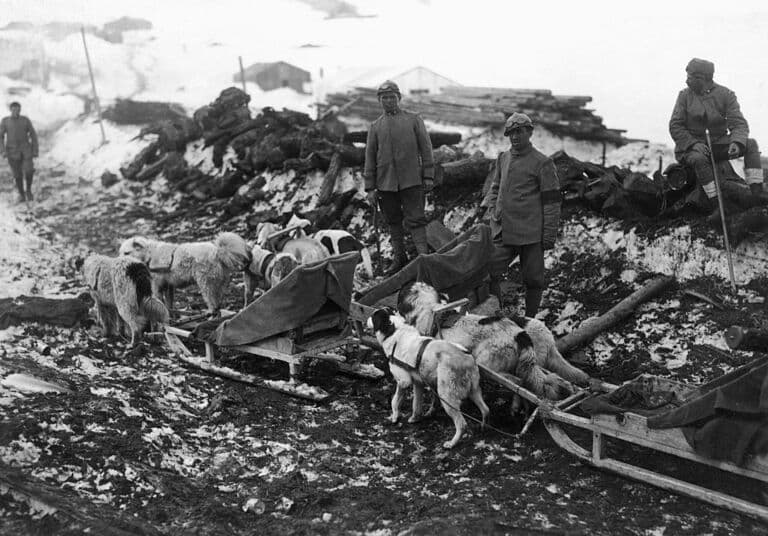
Daily Life In This Part Of The World
It Is Not Rare To Find A Corpse
“A corpse is found every two or three years, usually in places where there was fighting on the glacier,” Marco Ghizzoni of the White War Museum shared with the Guardian. However, there are also things that predate the White War hiding in the snow. In 1991, two hikers made a strange discovery in the Öztal Alps that lie between Italy and Austria.
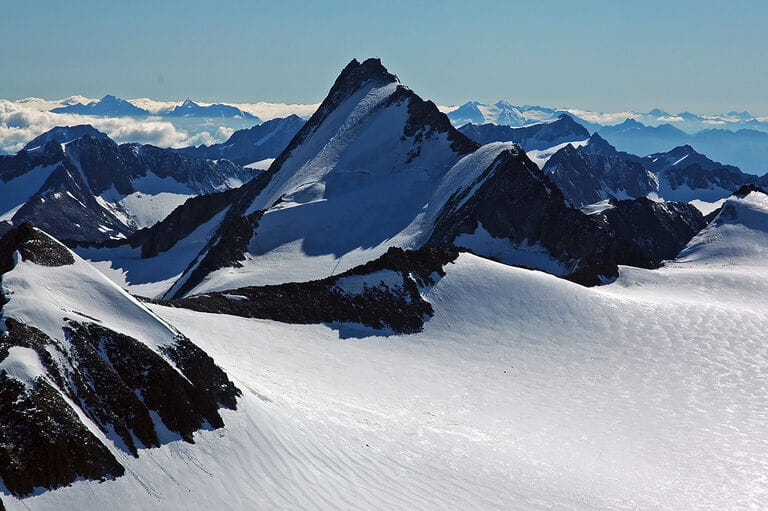
It Is Not Rare To Find A Corpse
More Relics From The Past
Right now, the experts are finding more relics that can be traced to the White War. Climate change has been fueling the process, but we want to talk about a find that predates any of this. The hikers did not find the human remains of a World War I soldier. Instead, this body dates back as far as 5,300 years ago!

More Relics From The Past
From The Copper Age
Now known as Özti the Iceman, these ancient remains gave scientists more insight into life in the Copper Age. The discovery has also led to speculation about the tattoos, possessions, and clothing of this prehistoric human. Morisini has drawn parallels between the amazing discovery and the relics they have found on Mount Scorluzzo.

From The Copper Age
It Was An Amazing Discovery
“The Özti discovery was huge,” he informed The Guardian. “Here was a relic of the prehistoric era, and today we are finding relics of the First World War.” There is also a camp that thinks that the iceman paved the way for a new kind of archaeology that involves studying things that the glaciers are giving up because of climate change.

It Was An Amazing Discovery
An Ancient Rock With Inscriptions
In a different part of Stelvio National Park, the melting glacier has revealed a rock with ancient writing inscribed on it. Even though these changes have come in handy for experts, they are not good news for the Alps. Experts think that they are causing the deterioration of the valuable mountain terrain.

An Ancient Rock With Inscriptions
The Melting Is Speeding Up
Let us take a look at the Forni glacier of the Italian Alps. The Guardian says that it has melted by more than a mile in the past century. What makes it worrying is that the process is speeding up. Half of that took place in only the past thirty years or so. The melting of the ice has been causing a lot of problems.

The Melting Is Speeding Up
It Has Also Caused Accidents
Onlookers saw the melting glacier trigger the Val Pola landslide, which caused fatalities in this part of the Italian Alps back in 1987. Experts also noted that climate change has been affecting the flora and fauna of the region as well. Luca Pedrotti of the National Park shared more about this with the Guardian.

It Has Also Caused Accidents
What It Means For The Flora And Fauna
“Some species really suffer as they are adapted to the cold Alpine environment,” she said. “So they have to go higher and higher in search of cold temperatures and better-quality food.” Not only that, but skiing and other human activities have been causing even more damage to the surrounding region as well.
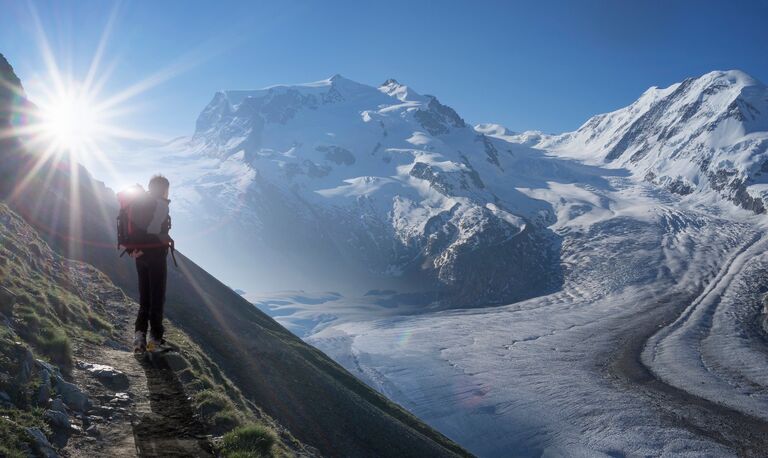
What It Means For The Flora And Fauna
Not Going To Stay Like This Forever
It sounds like this Alpine region would not remain pristine in the near future. Still, we also can’t wait to see what secrets will be revealed in the future as the glaciers continue to melt. We wonder if they will learn more about the White War. They might also find more prehistoric things like Özti the Iceman.

Not Going To Stay Like This Forever
A Lot More To Come In The Future
Based on the work in the Norwegian region of Oppland, the glacial archaeologists of Italy are going to have a field day. A team of experts has been working in this part of the globe since 2011. They have since recovered about 2,000 artifacts from the region. Some of them date back to 6,000 years ago.

A Lot More To Come In The Future
They Are All In Great Shape
While they are old, they mostly remain in great condition. This can be attributed to the cold conditions of the area. Reports say that they have recovered relics like skis, arrows, clothes, and even hunting equipment. They date back to anywhere from a few hundred years ago to the tenth century. The National Geographic magazine said that it just shows us how communities eventually moved away from farming.

They Are All In Great Shape
It Is Different From Normal Research
In some ways, glacial archaeology is easier than the traditional line of work as we know it. After all, they do not have to dig and excavate in the same way. Experts basically need to look for things that the melting ice has given up. Despite this, it is exhausting in a different way. The team has to make long hikes in hostile conditions. Sometimes, they even have to take helicopters to get to the sites.

It Is Different From Normal Research
This Is A Complicated Field
At any rate, these archaeologists occupy a complicated place in the field of research and preservation. It does not seem like they will stop making discoveries anytime in the near future. With the ice melting at unprecedented rates in recent times, they will likely continue to find one fascinating thing after another. These discoveries probably bolster their enthusiasm for what they will find in the region. We will be right here waiting to hear what else they uncover in this fascinating part of the world.

This Is A Complicated Field
Frozen History
It is always exciting when scientists discover things under the ice that have been there for long periods. Whether that’s a cave or even something as unbelievable as a mammoth! Who knows what other things can possibly be found under ice? Perhaps we have not discovered everything, but we have found a LOT. Some of these things we struggle to believe ice was able to consume! Prepare yourselves to be blown away by what has been discovered over the years.. we’re still stumbling for words ourselves!

Frozen History
An Icy Lighthouse
In the very cold regions of the world, it can get so cold that even entire architectural structures can freeze up. However, in Michigan, USA, this is actually quite a common occurrence. This particular lighthouse is situated on Lake Michigan surrounded by the cold in the winter of 2021. It is actually quite amazing to see what cold weather can do.

An Icy Lighthouse
Mammoth Brains
One of the more peculiar things that scientists’ have discovered under the ice is the brains of a wooly mammoth. The remains were actually discovered in permafrost along the coast of the Laptev Sea. It seemed as though, it is one of the few preserved mammoths that remains with the brain intact to ever be discovered. It dates back to 39,000 years ago. The sad part of it though was that was a baby mammoth. Scientists believe that it was only six to nine years old when it died.

Mammoth Brains
Frozen Fox
This is by far one of the most interesting discoveries on this list, just wait until you see what we’re talking about. Even though certain animals are created to live in certain weather conditions, there are times where they can succumb to the freezing weather. This was unfortunately what happened to the fox below. He was discovered by a hunter in some German lake. Apparently, he also came across a wild deer and boar before finding the fox. It is rumored has it that the preserved fox is now on display at a hotel in Germany.

Frozen Fox
Frozen But Alive
Not all the things that scientists find in the ice are necessarily dead. This was the case with the next discovery. Occasionally, these findings aren’t the result of frozen mishaps, but instead normal changes to the environment. For example, alligators can survive in freezing circumstances for a certain amount of time. While on the other hand, you and I will more than likely die from frostbite. This frozen state of temporary hibernation lets them live through these temperamental conditions. If only we could do the same.

Frozen But Alive
Is It A Plane?
It is also not that unusual to find crashed technology in ice. But even when it does happen, it still comes as a major surprise. In 1952, this plane was said to be bound for Anchorage, Alaska but crashed into a glacier instead! It was reported that it caused the deaths of 11 crew members and 41 passengers. Additionally, the dangerous conditions made it impossible for rescuers and police officers to retrieve the wreckage. It took another 50 years after the glacier had melted enough for a salvage mission to ensue.

Is It A Plane?
Fish Eats Fish
This is yet another enthralling find! This fish was frozen while it was in the middle of eating another fish. Probably the water got so cold very quickly that the fish within the water had frozen almost immediately. An ice fisherman had been the one to discover it. Who would have thought that ice can reveal so many secrets from the animal kingdom?

Fish Eats Fish
Dive In And Die
If you’re somewhat sensitive, we need to warn you that this next one is quite sad. Unfortunately, after a dive beneath the surface of the water, these birds had suffered a deep freeze from which they would never recover. It seems as though just seconds after going under, they froze completely. The kingfisher was discovered in Bavaria in Germany.

Dive In And Die
Puppies In Ice
Once in a while, scientists also come across things that hit close to home. In this case, they found an ice age puppy. What was most surprising is the fact that it was 12,460 years old but wasn’t too well preserved. It was an important find as it reshaped the idea of ancient canine phylogeny. This find in the deep Siberian tundra was completely unexpected.

Puppies In Ice
Amazing Arrowhead
Another common discovery that is found beneath the ice is weapons. Take this arrowhead for example. But the most interesting part of this breakthrough was that it apparently was made in the style of our present-day fishhooks. No understanding what we’re talking about? Well, this would mean that back in the day they knew how to hunt efficiently. How cool is that?

Amazing Arrowhead
Vikings
Known as The Sun Voyager, this gleaming sculpture was found in Reykjavík, Iceland, and is often described as a dreamboat. For many years scientists have discovered many items that hint at the true existence of Vikings. Among the mostly reindeer-manufactured gear, they also found sticks, bows and arrows, and the leather parts of shoes. A lot of the materials they found were proved to be somewhere around 3,400-years-old.

Vikings
A Dinosaur Mummy
This amazing discovery was one that helped scientists’ learn more about history. In this case, this revealed another way in which ancient ice-age animals would defend themselves. Known as the nodosaur, it was found and dated to be around 110 million years old, placing it smack bang in the middle of the Cretaceous period. During the time, there was a lot of intense predation. Meaning animals needed to survive through methods of defense. In this instance, the nodosaur had to use spikes as their armor.

A Dinosaur Mummy
How Forests Survive
As glaciers develop, they essentially crush anything and everything that comes in their way. However, they also pick up debris and rocks as they move. Scientists have called this sediment moraine. This moraine can act as a cushion for some of the stuff that the glacier would otherwise crush. And this is the case for certain old forests. Instead of uprooting and destroying the trees of a forest as the glacier travels, the moraine enables a layer of non-abrasive material to cushion the move. In some places, you find entire forests when these glaciers recede, such as this one in Alaska.

How Forests Survive
Ice As A Preservative
The big question on so many people’s minds is how can ice preserve these things so well? It seems as though the answer is because the weather conditions ward off bacteria and decomposers from functioning as usual. In the Arctic region, the lack of oxygen also helps the bacterial decomposers stop functioning. If they do operate at all, it will be at a much slower rate than usual. Scientists get to examine these well-preserved sacrifices, woolly creatures, and other incredible things because of this fact. Spellbinding, right?

Ice As A Preservative
Winter Wartime
Amongst all the unique things that scientists discover in the icy regions, they have all managed to find many remnants of past wars’. During WWI, for instance, certain battles were fought high up in the Alps. And of course, we are sure there is nothing worse than being at war in an icy trench. Countless soldiers suffered frostbite and hypothermia up there. If those in battle did not die from fighting, the blistering cold did.

Winter Wartime
Frozen Frog
It’s quite evident that frogs are not meant to live in icy cold areas of the world. It seems as though this little frog was attempting to hop its way across a small river or stream. Clearly, he made the wrong decision. Looking for an explanation. Well, the cold air (perhaps in conjunction with getting wet) induced the frog to freeze mid-cross.

Frozen Frog
Woolly Mammoth Specimen
A lot of the time, scientists expect to find common things like woolly mammoths. This prehistoric beast roamed the lands of the Arctic in places like Alaska and Siberia. Believed to be 39,000 years old, the specimen was discovered in a Siberian ice tomb. And is considered to be one of the best-preserved specimens ever!

Woolly Mammoth Specimen
Significance Of Spears
In Yellowstone National Park, an area where scientists previously found no sign of humans, scientists found a 10,300-year-old spear. It was evident that the spears they discovered were used to hunt animals and clear fauna. The most important bit about this finding, though, is what it reveals about the human presence. This means there was human existence in such cold weather in Montana, Wyoming, and Idaho.

Significance Of Spears
Meet Otzi Man
Most people have heard of Otzi Man, but just in case you haven’t, he is one of the more famous humans to have been found in the snow. Roughly 5,300 years old, this well-preserved body was found in the Alps between Austria and Italy. It is believed that he is the genetic ancestor of a significant number of Austrians in the area. However, he was suffering from gallstones, gum disease, hardened arteries, parasitic worms, worn joints, and Lyme disease. Aside from the state of his health, there was also an arrow in his shoulder and blunt-force trauma in his skull.

Meet Otzi Man
Woolly Creatures
As we previously mentioned, scientists have often unearthed many woolly creatures from the ice and areas that experience extremely cold weather conditions. The woolly rhino is yet another example. This recent find was well-preserved enough that its fur remained intact where predators had not chewed on it. This rhino was estimated to be about 18 months old. Found in Sakha in Russia, it was understood that the last of these animals went extinct roughly 10,000 years ago.

Woolly Creatures
Sabretooth Tiger
Also called cave lions, the Sabretooth tigers were known to roam the Arctic. However, several Russian scientists discovered these unique specimens in Yakutia in Siberia. Just like the woolly rhino, these creatures were cubs and their fur seemed to be very well-preserved. Additionally, like many other animals from the ice age, the Sabretooth tigers died out around 10,000 years ago.

Sabretooth Tiger
